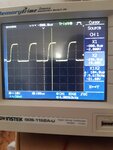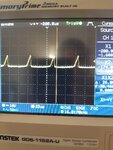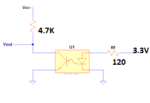An_RF_Newbie
Member level 3
Hello,
Here is Opt-coupler circuit isolation between my MCU and a motor driver (Attachments). My optocoupler IC is TLP521. As you can see the shape of my output voltage changed based on the input frequency (4 kHz to 16 kHz) where the shape of my output waveform is not acceptable. Based on my concentration, because of the Falling/Rising/Storage time, this problem has appeared in my circuit. As I see, all the optocouplers have the same parameters as my TLP521. Optocircuot voltage is 24V(VCC=24).
Here is Opt-coupler circuit isolation between my MCU and a motor driver (Attachments). My optocoupler IC is TLP521. As you can see the shape of my output voltage changed based on the input frequency (4 kHz to 16 kHz) where the shape of my output waveform is not acceptable. Based on my concentration, because of the Falling/Rising/Storage time, this problem has appeared in my circuit. As I see, all the optocouplers have the same parameters as my TLP521. Optocircuot voltage is 24V(VCC=24).
- I need to know how to isolate my circuit and how to get a good waveform up to 50Khz.
- What is the best optocoupler for my circuit?


